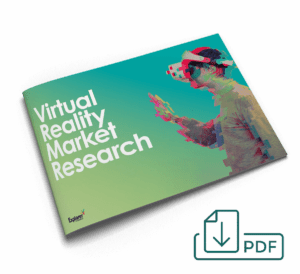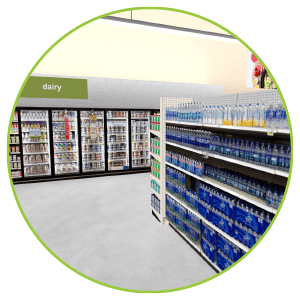Why Virtual Reality?
This resource provides an overview of how virtual reality (VR) can be used to deliver cost-effective, actionable consumer and marketing research insights. VR is already a well-established and proven methodology, and many respected marketers rely on it for its advantages in timeliness, price, and depth of insights.
Pressed for time? Save this guide for later!
Here, we’ll show you some examples of how you can use VR in your own market research to better understand consumer behavior. Let’s start with some of the latest facts relating to the size of the VR market:
- The Global VR market is projected to be $84.1 B by 2028 (a dramatic increase from $6.3 B in 2021)
- 58.9 Million people in the US are expected to use VR at least once per month in 2022
- 82% of companies who have implemented VR/AR solutions indicate that the benefits exceeded their expectations
Fortune Business Insights, Statista
3D VR research environments are extremely realistic
Benefits of VR Research
- VR allows you to simulate 3D formats such as retail stores, user experiences, retail pop-ups, bank branches, car dealerships and in-retail decision points without having to actually build them. This can be an enormous cost savings since there is no need to physically build out the different environments that are to be used for testing.
- VR research also has the benefit of increased speed as you can switch between multiple simulated VR environment options very quickly. You can then gauge end-user engagement with, and reaction to what you are testing almost as soon as it’s complete, rather than having to wait until additional physical mock-ups are built.
- During consumer research, you can test multiple environments or formats, without incurring the time and cost of moving your team and consumer respondents between the various locations that would be required in the physical world.
- VR research allows you to generate the retail consumer insights data you need to identify successful retail solutions. You can cost-effectively execute different retail shopper case studies in an easily adjustable VR lab that automatically logs all shopper behaviors along the path to purchase.
- Since the process is so quick, it’s easier to iterate what you share with research respondents ‘on the fly’. For example, when building physical assets, if you want to reorder the assortment in a shelf mock-up based on respondents’ reaction in early testing, it could take hours or more to make these changes. With VR simulation, you can change the environment very quickly as you go. That means that in less time, you can move further ahead in your research and learning objectives. It helps you to reach for possible solutions during the fielding of market research, rather than focusing primarily on merely understanding the current challenges to the desired behavior based on only using the initial environment set-up.
- VR research can be conducted in the convenience and relative comfort of a centrally located research test facility or even online. This can save time versus moving between disparate research locations, especially if they are in different geographies. Using a centrally located research facility or online methodology cuts time and travel costs, and also make it more convenient for senior decision-makers to participate in some of the research without having to commit days out of their schedule.
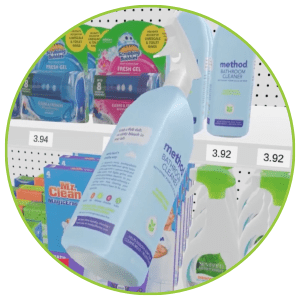
VR shopping is intuitive. 3D products can be removed from the shelf and placed in the shopping basket.
The tools required for VR research are easy to set-up and use
VR relies on technology, but that does not mean that it is an overly technical approach. Part of the appeal for VR testing is that once you set the required equipment up, it is intuitive and straightforward.
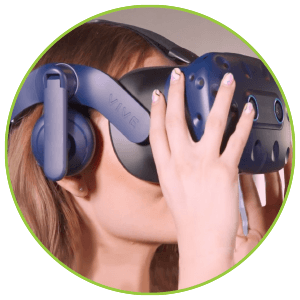
Wearable VR headset & hand controller are easy to use
The essential tools are something through which reality can be simulated for respondents, and their reactions tracked. It typically involves a wearable headset with a screen onto which the virtual environment is projected. It often also includes one or two hand controllers to capture the respondent’s hand movements.
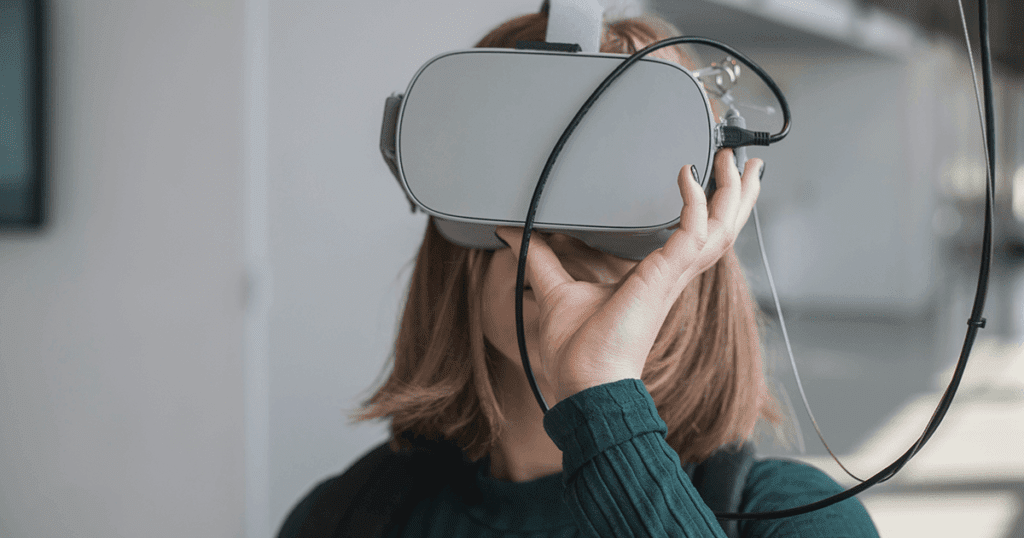
VR provides helpful data points to aid your creative process
As demonstrated, using VR in consumer and marketing research can provide vast amounts of data about how respondents interact with the stimulus with which you present them. Not only are a multitude of data points produced, but they are also directly linked to specific time stamps in the research exposure. Therefore it’s possible to derive shopper insights such as eye tracking reactions paired in some cases down to the millisecond.
However, data will only take you so far. VR can be a helpful tool for the market research expert, but in order to be harnessed into actionable intel, it must be interpreted. The data can point towards a variety of possible conclusions about things like packaging design and positioning in-store. Deriving and explaining the possible implications requires experience and expertise.
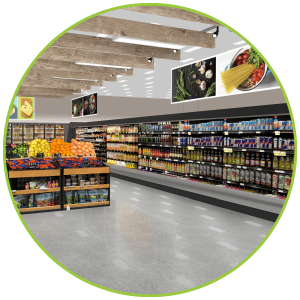
3D VR simulation of ‘real’ life-size shopping environments
Just as with traditional accompanied shopper methodology, VR can be followed by an interview where respondents are asked to discuss points of interest which have arisen from the data generated by their interaction. For example, shoppers can be asked why they picked up a product before placing it down on the shelf again. When they turned right, was that because something caught their eye, or an involuntary reflex to a phone message vibrating on the right part of their clothing? Did they stare at a shelf hanger because it interested them or because they could not understand what it said?
As mentioned, one of the advantages of employing VR in consumer and marketing research is how easy and fast it is to iterate changes based on what you observe. You’re able to use different versions of what you’re testing, or change them immediately based on what you learn in a respondent debrief, then get reaction to the evolved version almost immediately.
VR market research studies can also be conducted online
The availability of online VR tools now allows for affordable, large-scale VR market research studies to be conducted online using realistic environment experiences.
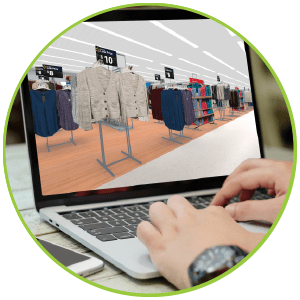
VR research testing can now be conducted online
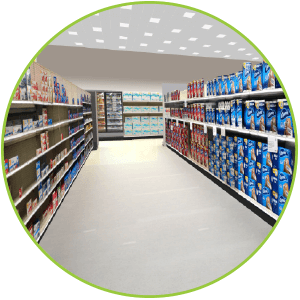
Online VR environments can duplicate
most ‘real’ environments
Using a standard web camera, dynamic attention tracking allows researchers to capture highly accurate consumer insight outputs. Eye tracking provides extensive data on what shoppers are actually viewing and fixating on. In fact, as the online VR takes place, there are 60 data points per second being collected. This data also includes information on mouse movements, navigation/path tracking, product selection/pickups, find times, and product purchasing.
Online VR Market Research: In Summary
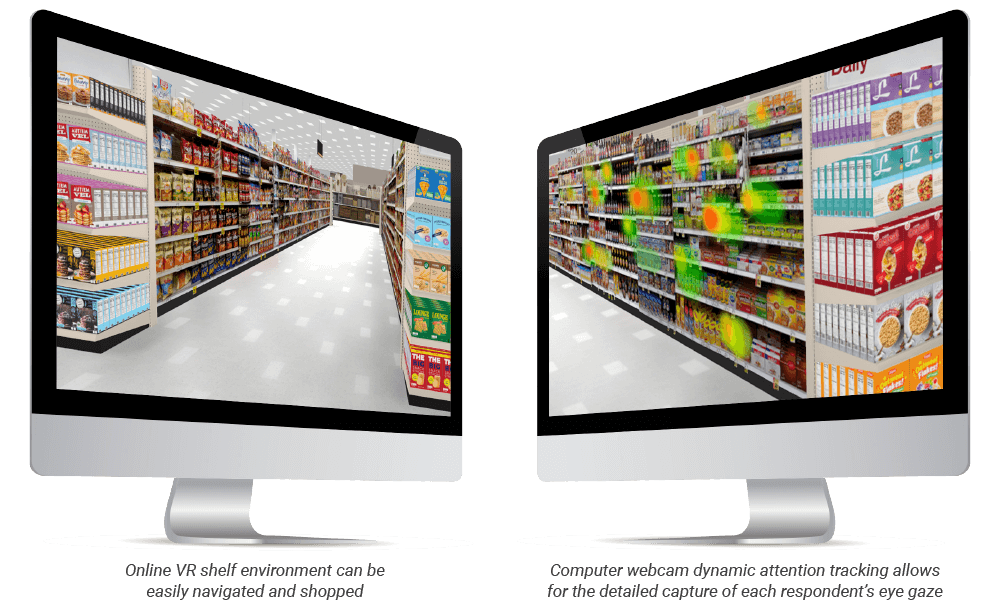
- Online VR market research is more realistic than any other online research solution
- VR environments are easy to use, adapt, and re-use
- Online VR provides more in-depth behavioral tracking than any other online research
- It’s a cost-effective testing option that doesn’t sacrifice crucial behavioral information
- It provides for quick turnaround, in and out of field just as fast as any other online research
VR research can also be used for a wide range of respondents simultaneously
VR technology can also be used for virtual focus groups. Linking together multiple respondents each wearing the appropriate VR headsets, you can easily have a focus group, with the standard benefits of interaction and group discussion which go with that methodology. Additionally, whereas a real-life focus group relies on respondents gathering in a single physical location, VR testing enables a focus group where respondents are in multiple locations.
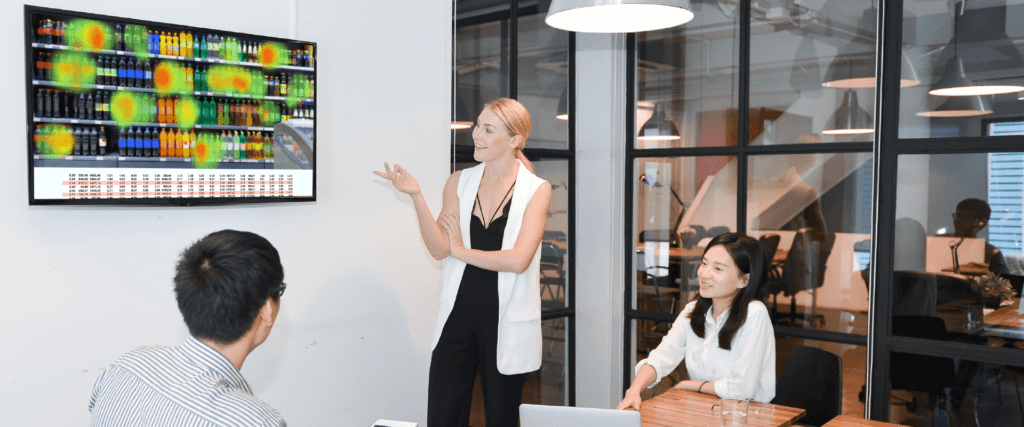
VR Research Testing in Summary: fast, cost-effective, highly accurate research insights
VR testing has evolved to the point where it should be included in the methodological toolkit of all modern consumer and marketing research professionals. It offers advantages including speed, cost-effectiveness, and flexibility both in setup and what is presented in the form of environment stimuli to respondents. Many major CPG manufacturers, retailers, and other large consumer-facing companies have already embraced it as a critical and highly effective research tool.
